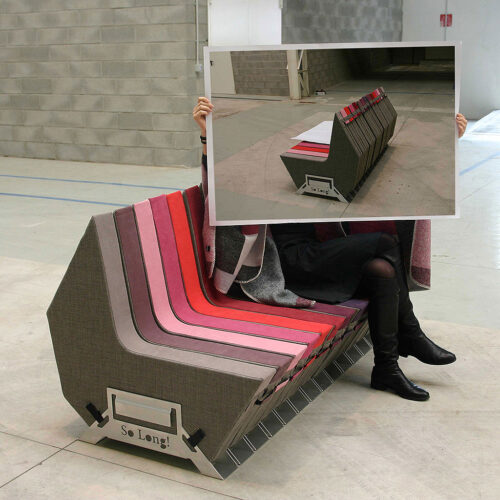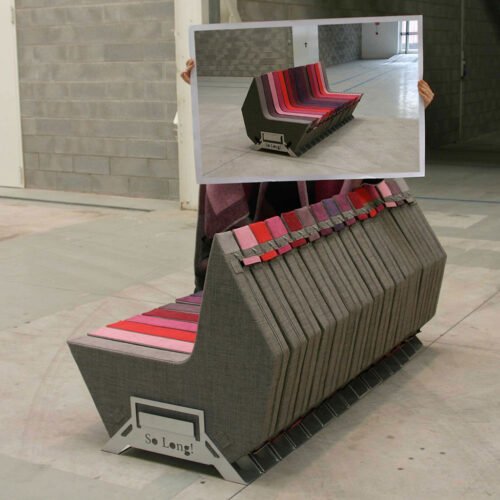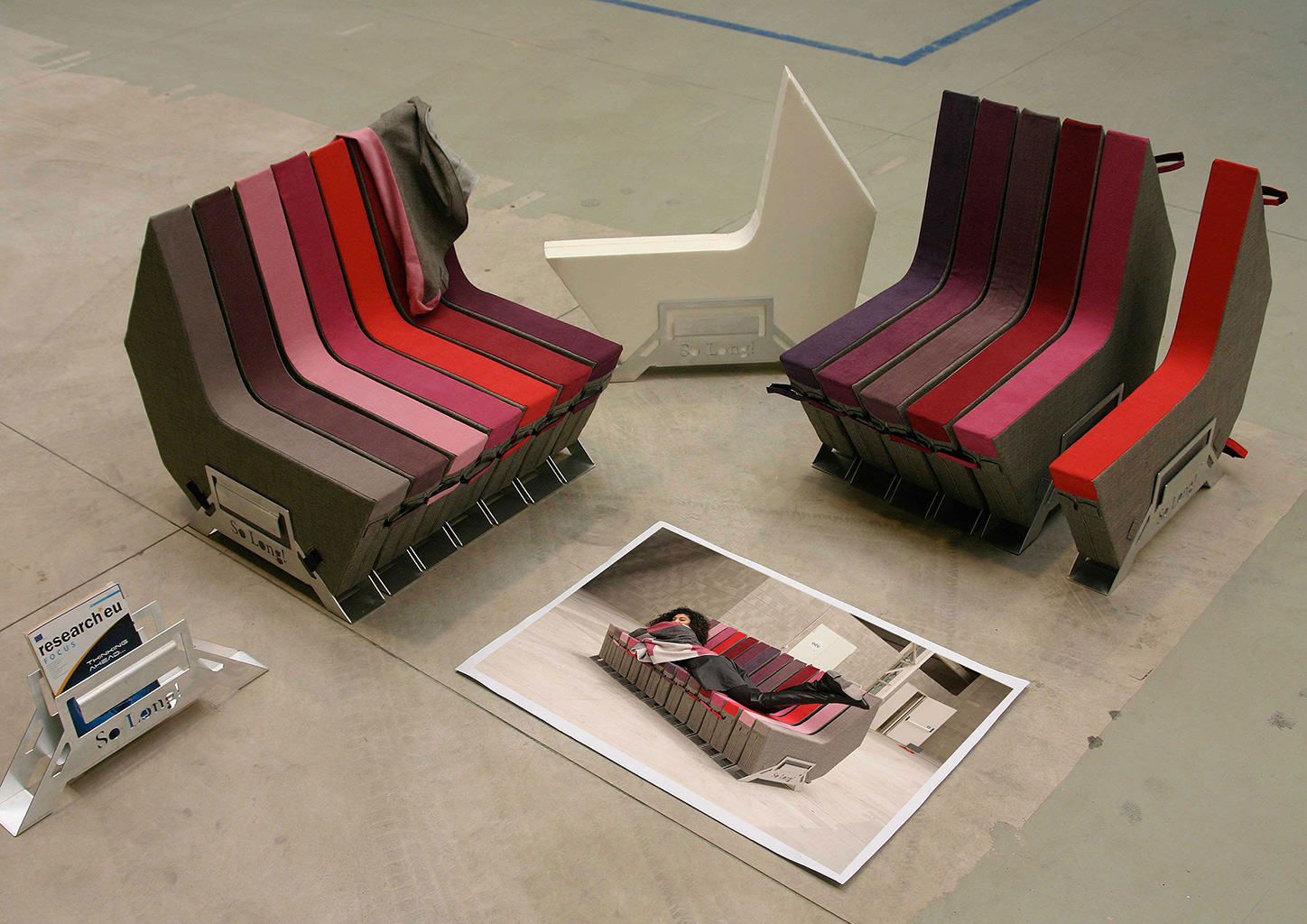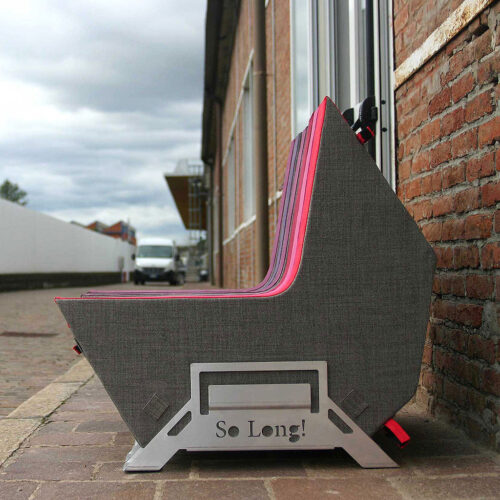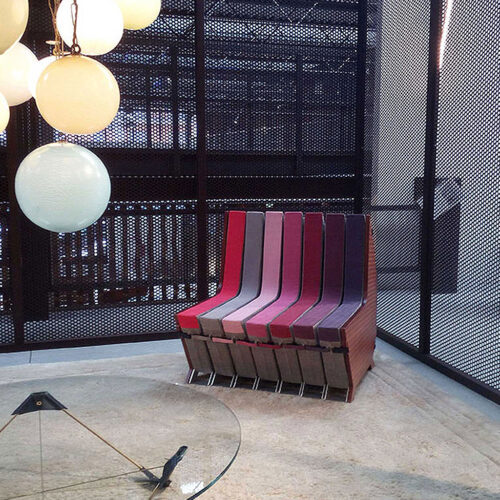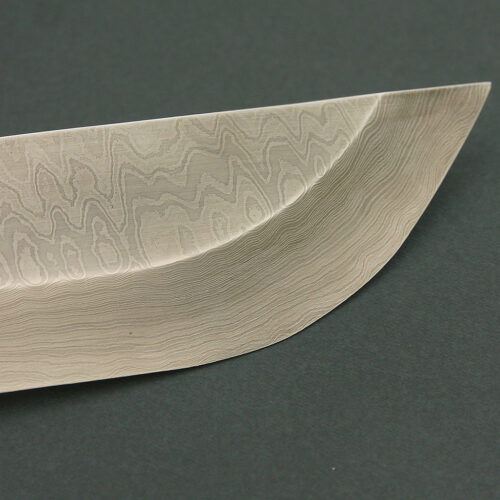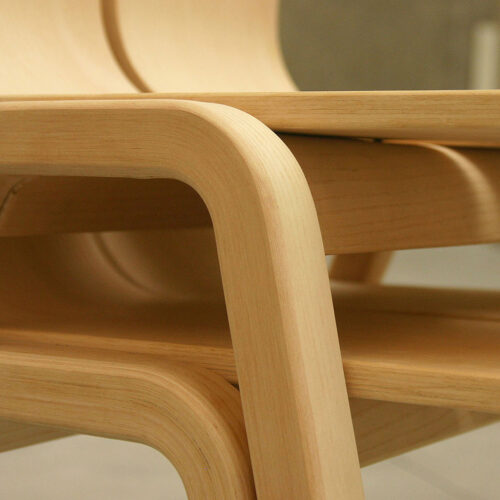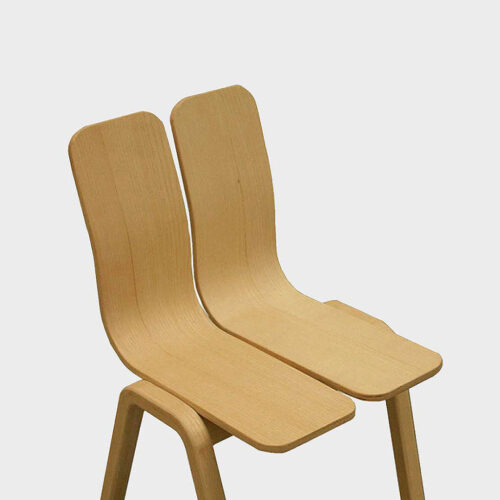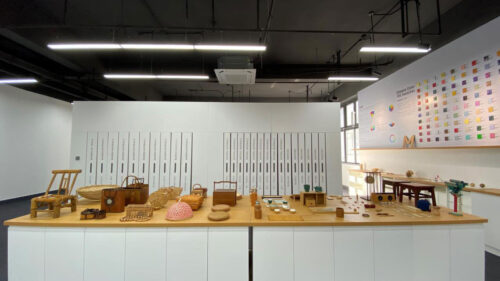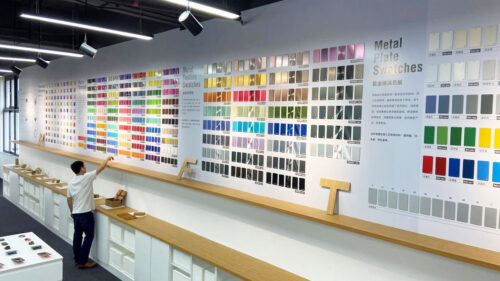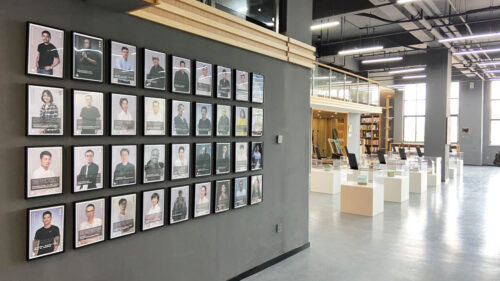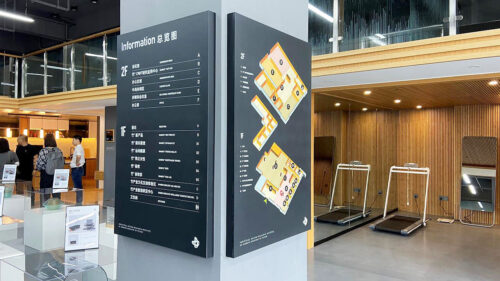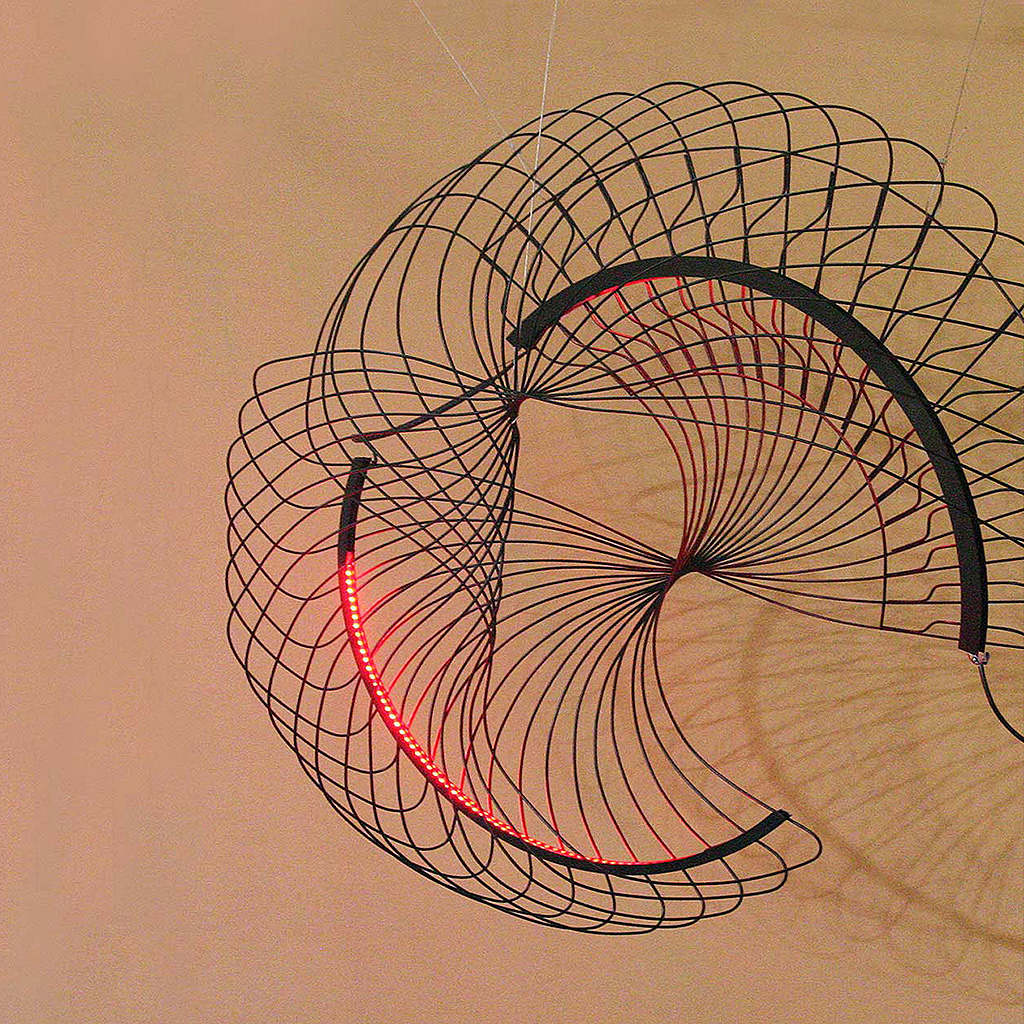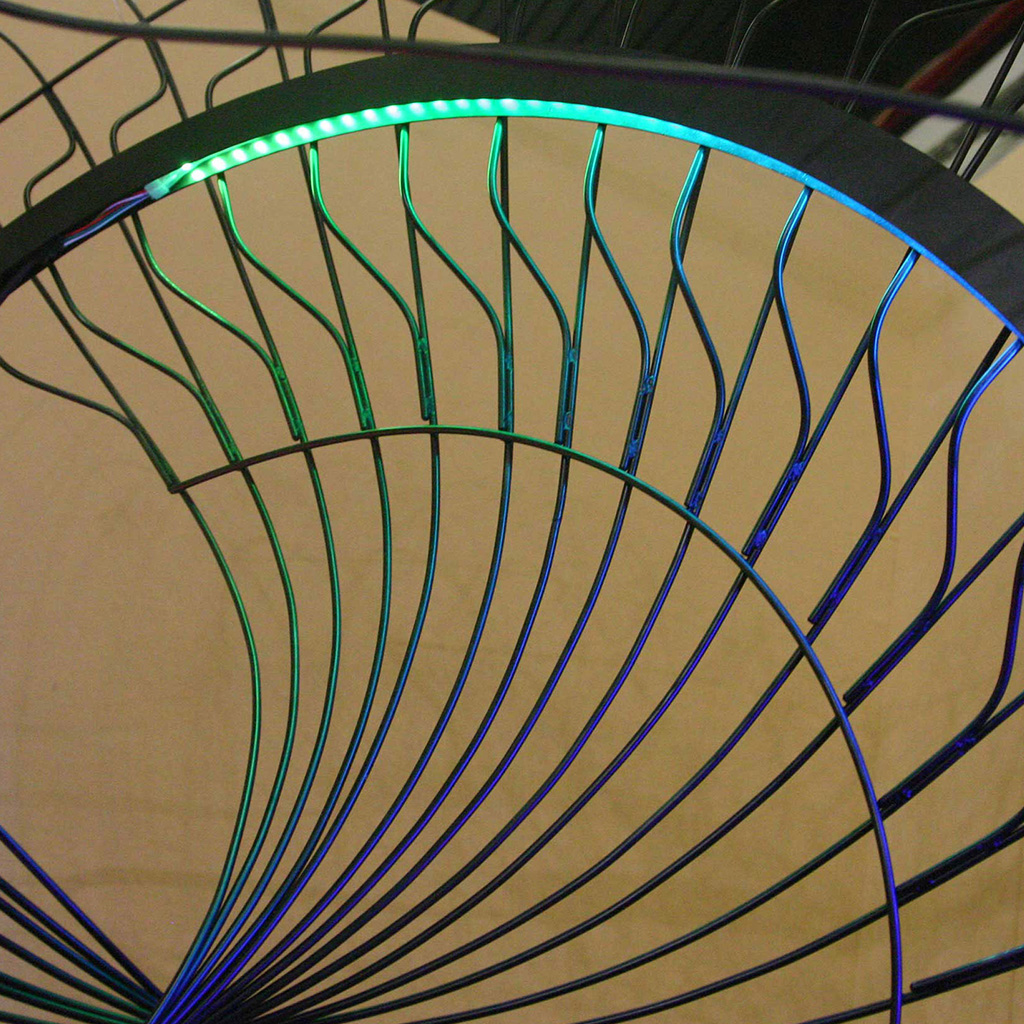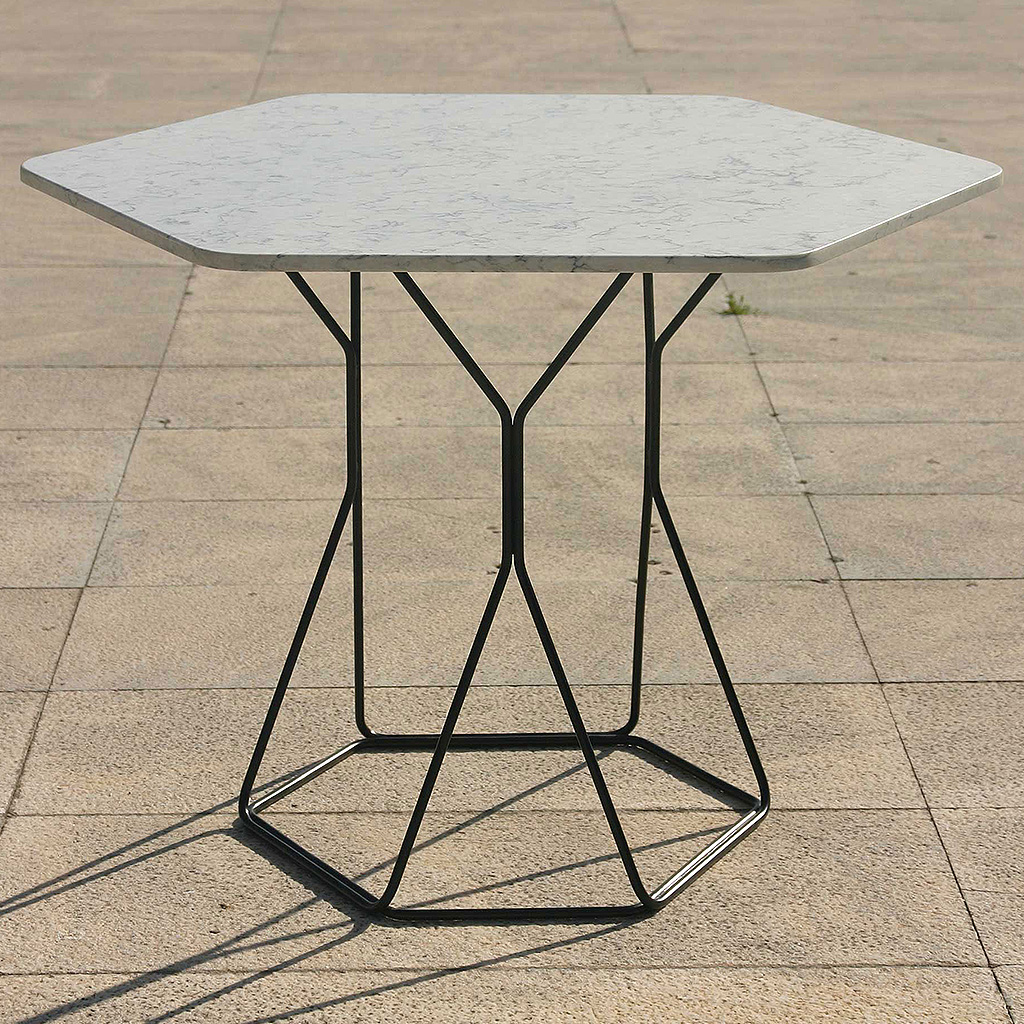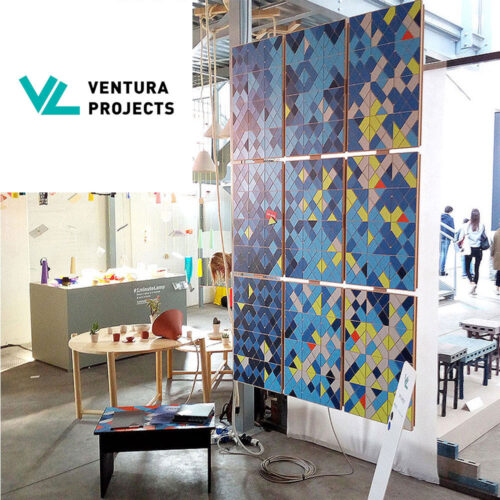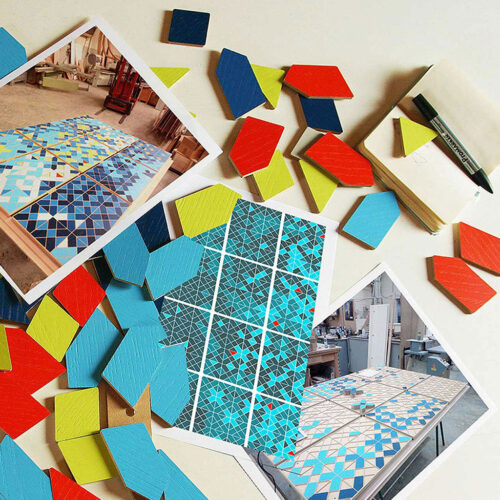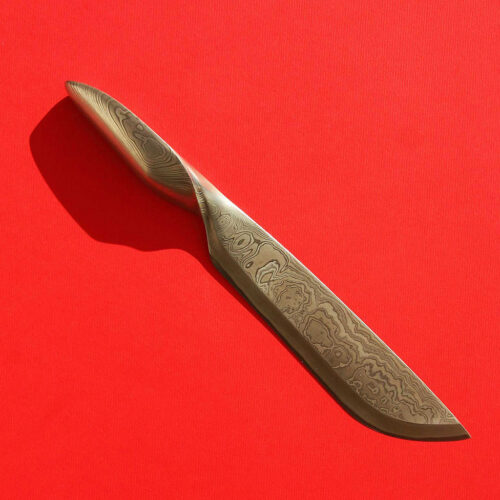
Exhibitions
A decade of design research and public exhibitions across international design institutions, galleries, and cultural events
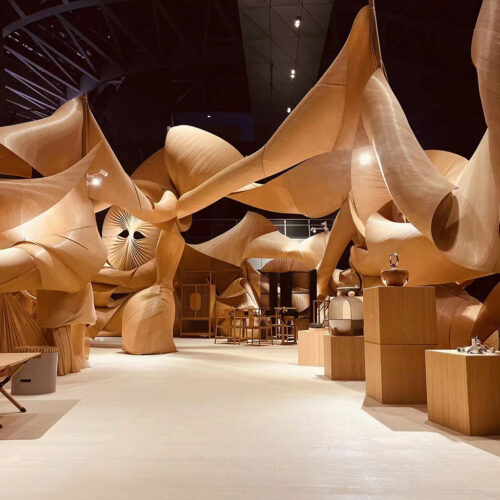
Shenzhen Design Week
— Installation & Product Exhibition
A collaboration between Ate Rote and Artop Design Shenzhen on bamboo applications
Explore
From Overproduction to Regeneration: New Uses for Bamboo
Shenzen Design Week_2023

The Shenzhen Design Week installation is the outcome of a research and concept design programme developed by Ate Rote and manufactured in collaboration with Artop Design Shenzhen. The project investigates the potential of bamboo as a material system in response to its current overproduction in China, studying how it can be reinterpreted through contemporary manufacturing to serve new product categories — particularly within the fitness and pet-care sectors.


Bamboo installation and product exhibition
The research explores bamboo not only as a traditional craft material, but as an industrial ecosystem, suitable for scalable and lightweight production. The installation itself is built from woven bamboo mats, reinterpreting classical Chinese fabrication techniques and unfolding them into large, folded sail-like surfaces that act as both spatial scenography and structural narrative. These modular textile-architectural forms celebrate bamboo’s flexibility while hinting at its latent architectural intelligence.


Bamboo Kettlebell
Parallel to the installation, a collection of prototype objects demonstrates how bamboo can replace heavier or less sustainable materials in everyday products. The pieces are conceived through Design-for-Disassembly principles: they rely on interlocking systems rather than screws or permanent joinery, allowing each component to be separated, repaired or recycled. The formal language is deliberately essential, favouring geometric clarity to facilitate mass production while integrating bamboo with metal or recycled plastics where necessary for performance and durability.


Bamboo Dumbbell
The resulting family of products includes fitness accessories — such as dumbbells, kettlebells and jump ropes — as well as pet-related designs including bowls, kennels, litter trays and small accessory tools. Together, the installation and product series demonstrate a model of lightweight, low-impact manufacturing that is both locally grounded in Chinese material culture and future-oriented in its approach to portability, sustainability and modular reuse.

Bamboo Kennel
The collaboration with Artop Design leverages this ecosystem as more than a supply chain: it becomes a living laboratory, where concept, engineering and fabrication form a single iterative loop. Instead of treating manufacturing as a downstream phase, the project integrates it as an early design driver — using the city’s prototyping capacity to explore new bamboo geometries, interlocking systems and reversible assembly techniques at a speed and precision unmatched elsewhere.

Bamboo Pet-Food Boxes
Shenzhen provides one of the most advanced manufacturing ecosystems in the world, where rapid prototyping, craft evolution and industrial scalability coexist within the same geography. Presenting the project within the framework of the Shenzhen Design Week means situating it inside this design-to-manufacture continuum, where material research can be translated directly into tangible production outcomes without losing its experimental nature.

Bamboo Litter Box
Shenzhen’s role is therefore not merely logistical but cultural: it demonstrates how contemporary design can be co-developed with industry, allowing research to feed directly into applied innovation. This synergy enables alternative pathways for material futures — where sustainable resources like bamboo are reinterpreted through advanced processes while retaining their systemic intelligence.
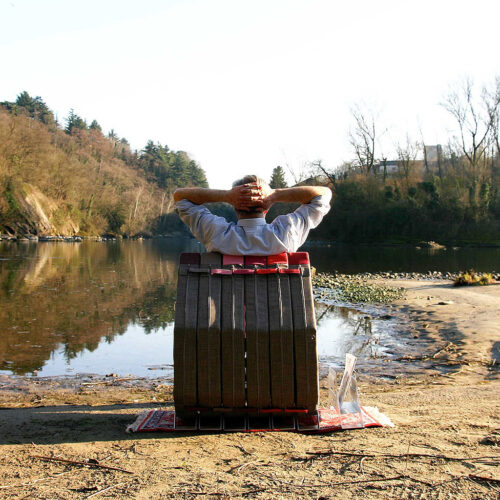
SO LONG! — Modular Ultra-Lightweight Sofa System
Nilufar Gallery, Milano
Unveil
Lightweight system for adaptable living and continuously reconfigurable spaces
Nilufar Gallery_2017

“SoLong!” is an extendable and highly flexible sofa system composed of modular cushion + base units, designed according to Design-for-Disassembly principles.
Each module features a bent and laser-cut aluminum base – which can also function as an independent shelf – paired with a nautical-grade polyurethane cushion and a removable, washable fabric cover in flax and fire-retardant PES.
Despite its solidity, every element weighs just 1.5 kg, making the system effortless to transport, reconfigure, or store.
The project was presented in 2017 at Nilufar Depot in Milan, within a curated selection of works exploring new material approaches and reconfigurable furniture typologies. The space of the Depot — a hybrid between gallery, archive and architectural scenography — offered the ideal framework to highlight the system’s reversibility and spatial adaptability.
“SoLong!” was exhibited not as a fixed sofa, but as an open grammar of components: a sequence of light, reconfigurable units inviting the visitor to imagine multiple arrangements rather than a single definitive form. The installation emphasized mobility, modularity, and the idea of furniture as a dynamic presence capable of adapting to shifting domestic rituals.
Nilufar’s curatorial setting reinforced the dialogue between experimentation and craft, placing the piece in conversation with contemporary Italian design research while framing it as a conceptual investigation into weightlessness, disassembly, and nomadic living. The project was received as a forward-looking interpretation of seating typologies, anticipating today’s growing interest in ultra-light, repairable and re-scalable furnishings.
The project originates from a research path focused on Design for Disassembly, investigating how furniture can be conceived as a set of reversible relations rather than a fixed object. The search for ultra-light, transportable and easily installable components led to a constructive logic in which every part is separable, replaceable and repairable over time.
The use of nautical-grade polyurethane was not only a technical solution for durability and outdoor resistance, but also a conceptual gesture: its buoyancy makes the entire structure literally floatable, reinforcing the idea of furniture designed for movement, impermanence and spatial freedom. The removable and washable textile cover completes the cycle of reversibility by making maintenance simple and continuous.
The project draws inspiration from the designer’s experience of travelling across the Cycladic islands, where architecture and objects often remain light, temporary and adaptable to shifting conditions of use. “SoLong!” translates this Mediterranean culture of portability and assembly-in-situ into a contemporary seating system that privileges lightness, modularity and liberated forms of inhabiting.

INFINIT.OO Knife
Damask-steel art-knife. First prize, Craft Design Award CNA Bergamo
Text
Knife in Damask Steel
For Forgiapizzi
Infinit.oo knife won the “Artigianato e Design” contest, held in 2017, with Riccardo Blumer chairman of the jury. The competition has been organized by the CNA of Bergamo in collaboration with master Luca Pizzi, owner of Forgiapizzi, one of the very few craftsmen in Europe able to manually create stainless damask steel.
The design takes inspiration from the infinity symbol and offers a continuous surface for the application of the characteristic textures of this ancient steel manufacturing technique.
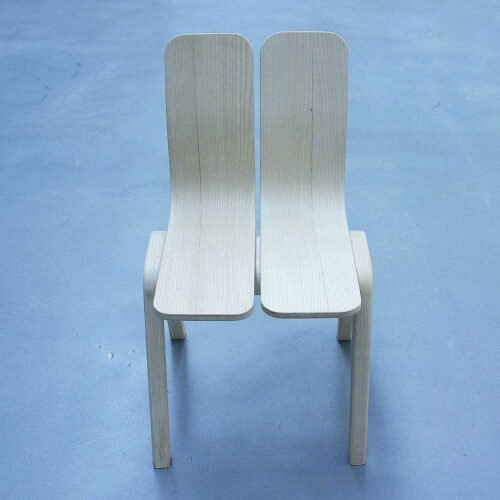
PLY — (Selected to Represent Italy)
Design Without Borders, Budapest, 2019_European Festivals Association (EFA)
Details
“Ply”
Modular Stackable Seating System
PLY is a modular seating system — a lightweight chair/bench family made from only three cold-bent plywood elements — presented at Design Without Borders in Budapest 2019, where Roberto Rota and Ate Rote had been selected to represent Italy within the framework of the European Festivals Association (EFA).
The project is conceived according to Design-for-Disassembly principles and relies on intelligent jointing rather than hardware, allowing the same three components to be recomposed as either a chair or a bench. The geometry is intentionally minimal, so that construction remains reversible, transport is effortless, and the system can adapt to multiple spatial configurations.
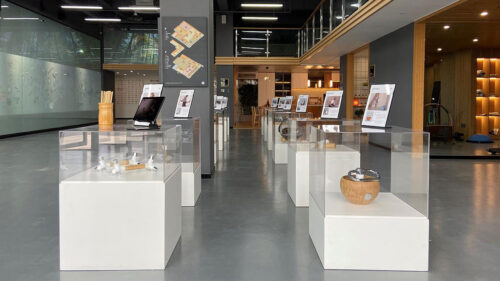
Fujian Bamboo Institute — permanent collection
From craft to industry: bamboo techniques translated into design products
Explore
Showcasing advanced and traditional bamboo fabrication methods
Fujian Bamboo Institute
The permanent exhibition at the Fujian Bamboo Institute presents the outcome of an ongoing collaboration between Ate Rote and Artop Design, exploring bamboo as a technological material rather than a merely traditional one. Within this context, Ate Rote developed a series of product concepts that translate research in material culture into tangible object typologies, while Artop engineered and manufactured the prototypes through an integrated industrial process.

Bamboo Dumbbells

Bamboo bowl-scales for pet food
The Fujian Bamboo Institute functions as a living archive of bamboo intelligence, where fabrication methods are exhibited along a continuum: from ancestral weaving and steam-bending practices to CNC machining, lamination, hybrid stamping and composite techniques. Visitors move through a pedagogical sequence that connects raw fibres to advanced structural assemblies, understanding bamboo not only as a resource but as an evolving platform of fabrication logics.

Portable pet food bowl container

Bamboo gun massager for fitness
The prototypes on display demonstrate how contemporary product design can interface with these techniques to generate new applications. Several of the pieces — originally prototyped for the Shenzhen Design Week — are shown here alongside additional works developed specifically for the Institute, with a focus on fitness and pet-related products. These objects combine bamboo with recycled plastics and metal inserts, using forms that are intentionally minimal yet structurally expressive. Volumes are developed through cylindrical and spherical geometries to emphasise continuity, tactility and clarity of composition.

Litter Box

Bamboo Kettlebell
A key design principle in the collection is Design for Disassembly: no screws or permanent fixings are used, and every joint is engineered as a reversible connection. This allows the objects to be disassembled, repaired or recycled with zero destructive processes — demonstrating a blueprint for circular manufacturing that does not rely on complex infrastructures.
A selection of prototypes is presented in the exhibition, including a modular three-arm dumbbell, a kettlebell assembled through screw-less interlocking, a family of minimal, metaphysical-style portable bowls and containers, and a disassemblable cat hammock based on a tension-structure joint with no hardware. Each piece demonstrates how bamboo can be translated into contemporary product forms while retaining reparability, reversibility and material clarity.

First set of designed bamboo products
The exhibition is organised through interactive and didactic pathways, where techniques, tooling processes and tactile samples are presented alongside the finished artefacts. Rather than isolating the product from its fabrication origin, the Institute stages the complete narrative: material extraction, transformation logic, constructive syntax and final use scenario all coexist within the same spatial experience.

Bamboo ammock, detail of the joint

Bamboo Kettlebell, details
This permanent display also forms part of a broader regional development strategy by the Fujian province, aimed at reinforcing bamboo as a competitive industrial resource for large-scale consumer markets. The programme supports the advancement of bamboo-based products across multiple sectors — including fitness, furniture, pet-care, hotel toiletries, tourism souvenirs and interior applications — promoting a fully integrated supply chain in which research, design and manufacturing operate in synergy to generate new economic and cultural value.

FREE CAGE — Interactive IoT installation
Thessaloniki Design Week
Project insights
Sonic Interactive Morphologies
Free cage is an alluminium lamp presented at the Thessaloniki design week 2019. Designed according to harmonic principles, it is an interactive “internet of things” installation, technologically advanced and equipped with sound and position sensors. It changes colors and light intensity according to frequencies and vibration produced by the sound of a tibetan bell.
“We, sailors and prisoners, will be increasingly caught up in this vast network of tangible and intangible entities. We will be more and more inside a prison with open cages, and we will be like those birds that no longer flee from their cage even the doors are open.
We will be at the same time both the wolf and the dog of Aesop’s fable, without knowing which of the two identities we will be interpreting with our choices.
Where is freedom? Where is the prison? Where is the matter? Where is transcendence? Which song will we sing? The power or frustration? The escape or the return?”
Roberto Rota
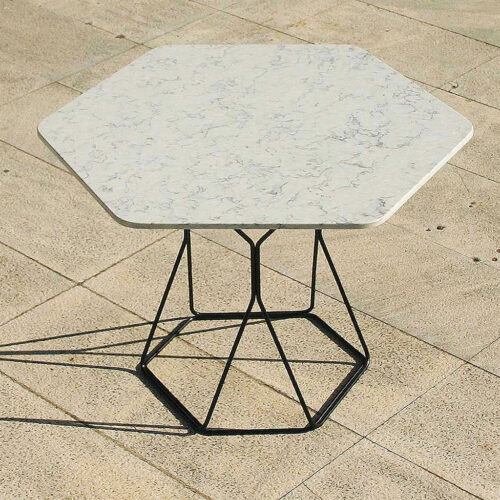
PRISMA TABLE
Thessaloniki Design Week
Unfold
Details and Optical Illusions
Prisma Table is presented at the Thessaloniki Design Week in 2019 as part of the interactive IoT installation Free Cage. The piece consists of a marble tabletop resting on a bent metal-wire base, whose geometric–parametric structure subtly echoes the stereometric qualities of classical Mediterranean architecture. The form is conceived as an intersection between material weight and visual lightness: a solid stone plane supported by a spatial, almost immaterial lattice.
During the installation, a series of sensors integrated beneath the tabletop transformed the piece into an interactive environmental object. As visitors moved around it, the system translated their proximity and shifting positions into a gradual modulation of light, illuminating an overhead lamp in response to their presence. The table thus operated both as furniture and as interface — a structural surface that simultaneously organised space and made visible the relationship between bodies, movement and ambient technology.
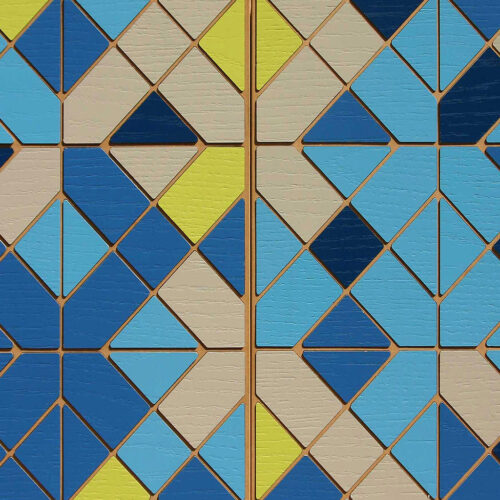
OPEN PUZZLE — Playful Sound-Absorbing System
Ventura Lambrate, Fuorisalone Milano, 2017
Explore
A reconfigurable sound-absorbing system based on movable magnetic tiles
Open Puzzle is a modular sound-absorbing system designed to generate endlessly reconfigurable color patterns based on a few basic geometric shapes. Each element can be repositioned freely, allowing users to “compose” surfaces like an open-ended puzzle. The system can be integrated both into furniture and wall installations, using magnetic coupling to enable effortless attachment, removal and rearrangement. Through playfulness and modular repetition, acoustic performance becomes a spatial and tactile interaction rather than a fixed architectural treatment.
